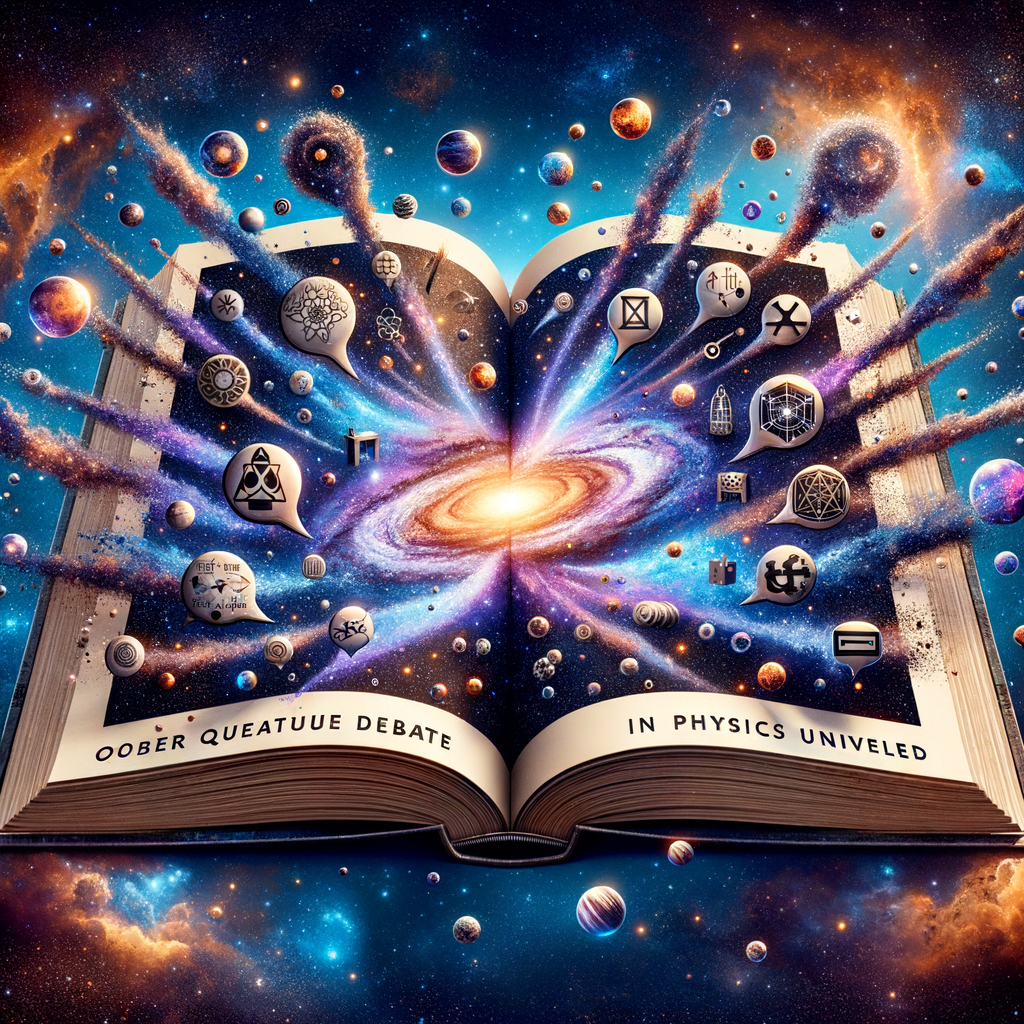In the captivating realm of physics, quantum mechanics stands as one of the most intriguing and confounding fields of study. With its bewildering principles and paradoxical phenomena, it has sparked numerous debates among scientists for decades. Welcome to “Quantum Quarrels: Modern Debates in Physics Unveiled,” where we explore the fascinating disputes that have shaped our understanding of the quantum world. From the nature of reality to the limits of measurement, we invite you on a thrilling journey through the cosmos of modern physics.

Navigating the Quantum Quarrels: A Journey Begins
Quantum mechanics often feels like a puzzle with pieces that refuse to fit neatly together. This enigmatic field began with the unsettling discoveries of the early 20th century, when physicists like Max Planck and Albert Einstein uncovered phenomena that defied classical understanding. Planck’s revelation of energy quanta and Einstein’s photoelectric effect laid the groundwork for a revolution that continues to baffle and inspire. As we embark on this journey, it is essential to appreciate the historical context that set the stage for today’s quantum quarrels.
The birth of quantum mechanics brought with it a wave of groundbreaking theories and experimental findings. Niels Bohr introduced the concept of quantized electron orbits, while Werner Heisenberg’s uncertainty principle shattered the deterministic view of the universe. These developments prompted a flurry of intellectual debates, with luminaries like Einstein and Bohr at the forefront. Einstein’s famous remark, “God does not play dice,” encapsulated his discomfort with the probabilistic nature of quantum mechanics, a sentiment that continues to resonate in contemporary discussions.
Today, the legacy of these early visionaries can be seen in the vibrant and sometimes contentious discourse that defines modern physics. The quantum realm, with its superpositions, entanglements, and wave-particle duality, challenges our very notions of reality and causality. As we navigate these quantum quarrels, we find ourselves continually questioning and expanding our understanding of the universe. The journey through this labyrinth of ideas is as exhilarating as it is perplexing, drawing us deeper into the mysteries of existence.
Modern Physics’ Biggest Debates: Unveiling the Mysteries
One of the central debates in modern physics revolves around the interpretation of quantum mechanics. The Copenhagen interpretation, championed by Bohr and Heisenberg, posits that particles do not have definite states until they are observed. This idea, while widely accepted, has faced stiff opposition from proponents of alternative interpretations, such as the many-worlds theory. Advocated by Hugh Everett III, the many-worlds interpretation suggests that all possible outcomes of a quantum event actually occur, each in its own parallel universe. This mind-bending concept continues to provoke lively discussions among physicists and philosophers alike.
Another hotly debated topic is the phenomenon of quantum entanglement. Described by Einstein as “spooky action at a distance,” entanglement occurs when particles become so interlinked that the state of one instantly influences the state of another, regardless of the distance separating them. This defies the classical notion of locality and has led to groundbreaking experiments, including the recent confirmation of quantum teleportation. The implications of entanglement stretch beyond physics, potentially revolutionizing fields like cryptography and computing. Yet, the precise nature of this phenomenon remains one of the most perplexing quandaries in modern science.
The quest to unify quantum mechanics with general relativity represents another monumental challenge. These two pillars of modern physics, while individually successful, are notoriously incompatible when it comes to describing the fundamental workings of the universe. The search for a theory of quantum gravity, which seeks to reconcile these frameworks, has given rise to various approaches, such as string theory and loop quantum gravity. Each proposal offers tantalizing glimpses of a deeper reality, yet none have achieved definitive empirical validation. This ongoing saga underscores the dynamic and ever-evolving nature of scientific inquiry, where each answer often leads to new questions.
The world of quantum mechanics is a dazzling and intricate dance of ideas, experiments, and debates. As we’ve navigated the quantum quarrels and unveiled the mysteries of modern physics, we’ve glimpsed the profound challenges and exhilarating possibilities that lie at the heart of this field. The debates that rage on today are a testament to the enduring human spirit of curiosity and the relentless pursuit of knowledge. With each new discovery, we inch closer to unraveling the secrets of the cosmos, guided by the spark of inquiry that has illuminated our path for centuries. The journey through the quantum realm is far from over, and the next great breakthrough could be just around the corner.









